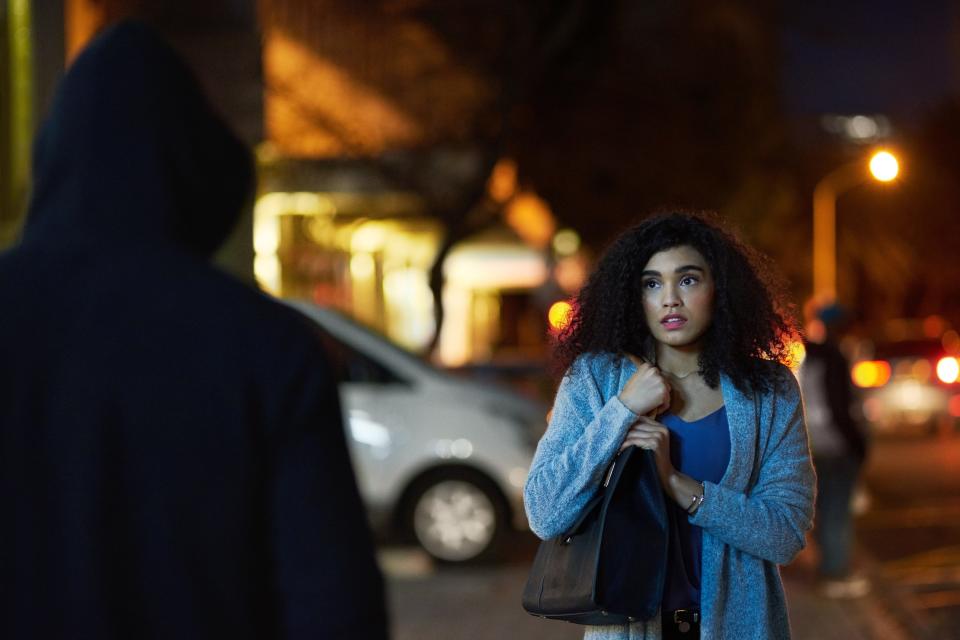The number of missing Black and Latina women has spiked in the pandemic. Here's how data and media obscure the problem.

There's been a silent epidemic of missing Black and Latina women since the start of the pandemic.
The exact number is unknown because data is incomplete, and there are disparities in media coverage.
Experts are petitioning for better data collection and legislation that protects missing people.
Since the start of pandemic, there's been a spike in missing Black and Latina women - a phenomenon that follows yearly upticks of missing people of color, according to experts.
Data from the National Crime Information Center found that 19,545 Black women ages 18 and over went missing in 2020.
Nearly 71,000 Black girls ages 17 and under went missing last year.
"The numbers are spiking," Natalie Wilson, a cofounder and the chief operating office of Black and Missing Foundation Inc. (BAMFI), an organization that is dedicated to spreading awareness about missing people of color and providing resources for their families, told Insider.
"When we first started the organization, close to 30% of missing people were people of color … that number has grown to 40%," Wilson, whose foundation started in 2018, said.
Related Article Module: 710 Indigenous people, mostly girls, were reported missing over the past decade in Wyoming, the same state where Gabby Petito reportedly disappeared
The numbers for Latina women and girls are more difficult to come by. In fact, there does not appear to be an umbrella organization specifically focused on missing Latino youth and adults.
Latinas are counted with white women and youth in these data sets - a problem researchers say obscures the scope of the epidemic against these communities.
But that same data set found 46,056 white women and 112,879 white children - including Latinas - went missing in 2020, the most recent year for which data is available.
"It's so important to change the narrative around our missing," Wilson said. "They're often viewed as less than or as if their lives don't really matter, but these are mothers, fathers, sisters, brothers, friends. These are vital members of our communities."
Lack of data leads to the erasure of missing women of color
Though the numbers of missing Black and Latina women and children are high, they don't tell the whole story, experts say.
As with hate crimes and harassment, vulnerable communities may not come forward to report missing cases out of misunderstanding and fear.
A common misconception is that people need to wait a specific amount of time before reporting a missing person. But this is not the case.
Ralina Cardona, League of United Latin American Citizens
According to Child Find of America, an organization that provides education and training to help locate missing children, waiting 24 hours before calling authorities is a myth that can have detrimental effects, particularly since taking action within the first 48 hours is crucial.
"You might have heard that you need to wait 24 hours before reporting a missing person, but the waiting period is a myth," the organization's website says.
Language and citizenship may be obstacles that prevent people, particularly Latinos, from reporting a missing person, Danielle Slakoff, an assistant professor of criminal justice at Sacramento State, said.
"Early research specific to the pandemic is showing there were a lot more phone calls to health and domestic-violence resource centers," she told Insider. "So there's definitely reason to believe that the level of violence has gone up since the pandemic started."
Slakoff added: "Many women who leave their home early or are 'runaways,' they are leaving because the home environment is not safe."
Wilson suggested that because of lockdowns during the pandemic, some missing people might not have been adequately accounted for.
Experts also say that despite these difficult circumstances, Black and Latino families are often hesitant to report a missing person. Many are distrustful because of legacies of mistreatment and disproportionate targeting by law enforcement.
Lack of attention hides the epidemic of missing women of color

Advocacy organizations like BAMFI have drawn attention to the epidemic of missing women of color hiding in plain sight - but they face major obstacles.
"There's this trickle-down effect," Wilson said. "Intense early media coverage ensures the community looks for individuals, begets more media attention, and forces law enforcement to add resources to the case."
The League of United Latin American Citizens (LULAC) also takes on this work. It launched a campaign when Vanessa Guillen, a 20-year-old Latina soldier who went missing, was found killed last year.
"The Vanessa Guillen story and the story of ongoing gender violence in Puerto Rico, these are stories we've always tried to shine a light on," Ralina Cardona, LULAC's national vice president for the Northeast, told Insider.
Despite the attention garnered through these media partnerships, there still are not enough resources directed toward the crisis of missing Black and Latina women.
"It's very difficult to tell these stories when the data is not a priority," Cardona said. "Often, we hear about stories involving Black and brown people through word of mouth, old-school oral history."
-Don Winslow (@donwinslow) September 19, 2021
The case of Gabby Petito brought renewed attention to the disproportionate media coverage white women receive.
Slakoff conducted research on disparities in media coverage between missing white women and women of color and found the phenomenon known as the "missing-white-woman syndrome" persists.
Her research found white female victims tended to be portrayed more favorably than their Black and Latina counterparts in media coverage.
Coined by the journalist Gwen Ifill in 2004, the term describes "the media and public fascination with missing white women - like Laci Peterson or Natalee Holloway - while ignoring cases involving people of color," the MSNBC host Joy Reid told viewers during her show Monday.
Experts are calling for more media coverage and a better repository of data as an intervention.
Others are calling on governments to pass legislation that can help with the safe return of missing people, like the Ashanti Alert Act passed in 2018.
Named after Ashanti Billie, a 19-year-old Black woman who was kidnapped and killed in 2017, the bill established a nationwide communication network to notify the public about missing people over the age of 17 who fall outside the scope of America's Missing: Broadcast Emergency Response, or Amber Alerts, and Silver Alerts.
"It takes all of us, law enforcement, the media, and the community to help us bring awareness to those missing in our communities," Wilson said. "These people are desperately searching for their missing loved ones. They want answers. They deserve answers."
Read the original article on Insider

